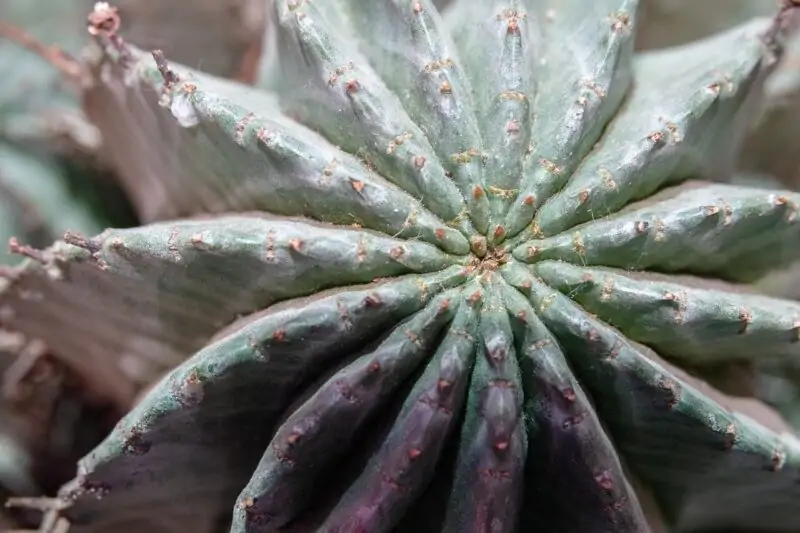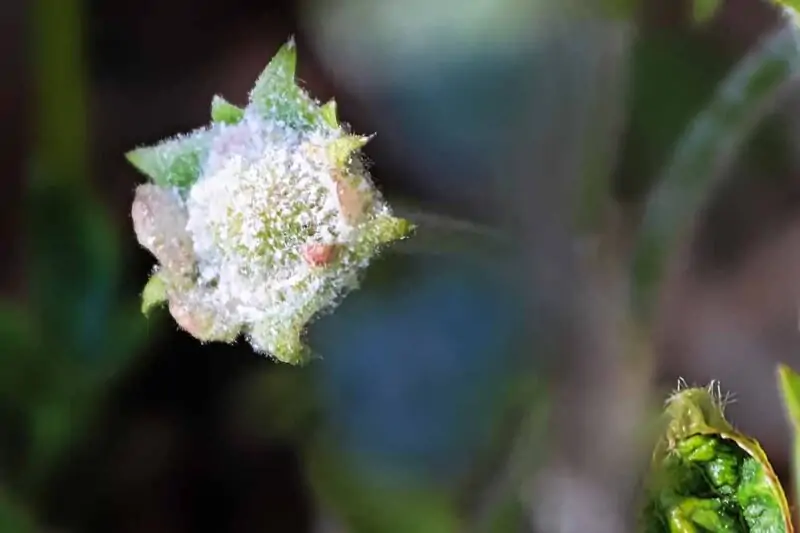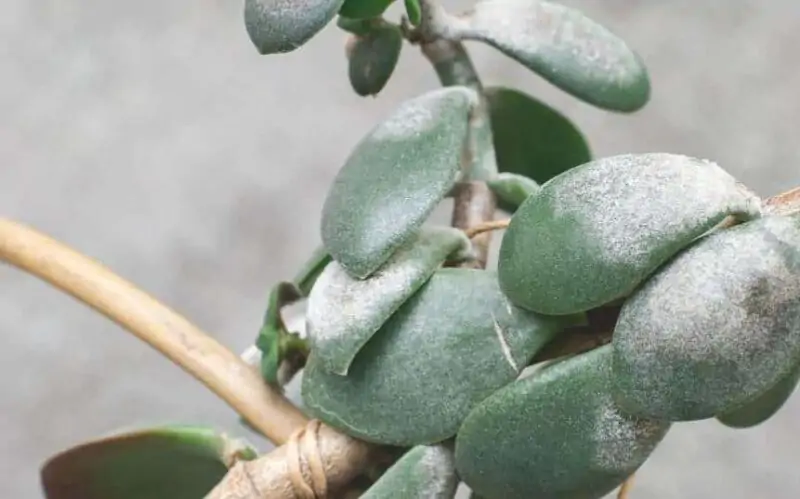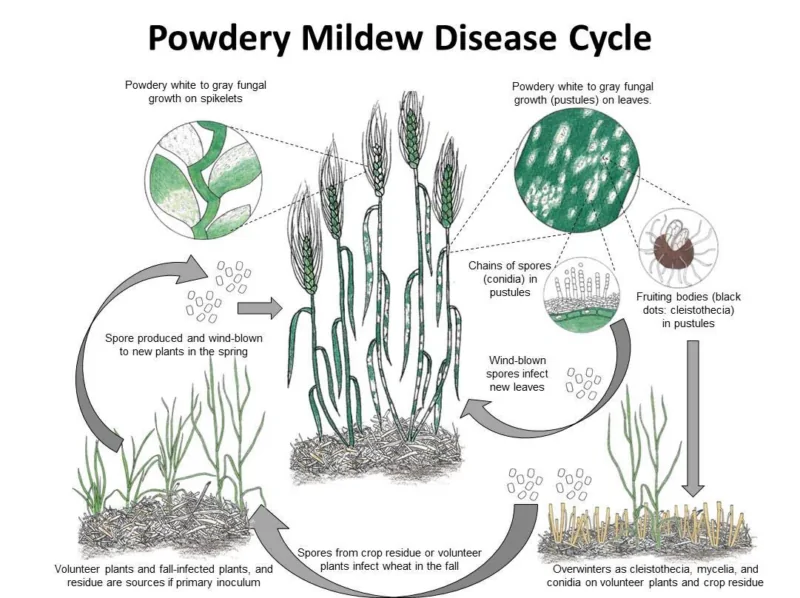Easy Guide to Dealing with Powdery Mildew on Succulents: Keeping Your Succulent Plants Mold-Free

Howdy! Ever noticed a white, powdery substance on your beloved succulents and thought, “What on earth is that?” Well, buckle up, plant pals, because we’re about to delve into the mysterious world of powdery mildew on succulents. Just like a surprise guest at your BBQ, this fungus can turn up uninvited and threaten to spoil the fun. But don’t fret, y’all! I’ve got all the tips and tricks you’ll need to identify, treat, and prevent this pesky problem.
What Exactly is Powdery Mildew on Succulents?
Think of powdery mildew as the unwanted party-crasher of the succulent world. It’s a fungal disease that forms a white to grey powdery growth on the leaves and stems of your plants. Doesn’t sound like something you’d want to invite over for dinner, huh?
Visual Characteristics
Ever noticed your succulents look like they’ve been dusted with flour? Well, sugar, that’s the classic white powdery mildew at work. Infected leaves can display white to grey mold, sometimes forming a powdery coating. These white spots may distort the leaves, leaving your plant looking more Halloween ghost than cheerful houseplant.
Triggers
Now, y’all might be wondering, what causes this unsolicited visit? Moist conditions, poor air circulation, and overcrowded plants are like a VIP invitation to this fungal fiesta. Keep in mind that even though succulents like dry conditions, they aren’t immune to powdery mildew. Yep, these hardy little guys can still fall prey to this fungal foe.
How does Powdery Mildew Spread and Infect Succulents?
Like a good rumor, powdery mildew spreads fast and wide. The fungal spores are windborne and can easily reach nearby plants. If your succulent is infected, powdery mildew can also spread through watering or even just touching the infected leaves. Crafty little critter, isn’t it?
Can We Halt the Spread of Powdery Mildew?
Sure can! Isolating the infected plants, increasing air circulation, and applying fungicide are some effective ways to halt the spread of powdery mildew. Remember, just as with handling the last slice of pie, it’s important to act quickly and decisively.

Understanding Powdery Mildew and Other Succulent Fungus
Now, not every white spot on your succulent is powdery mildew. There are other pesky pests and diseases that like to tango with your succulents.
Distinction between Powdery Mildew, Black (Sooty) Mold, and Grey Mold
It’s easy to mix up powdery mildew with its cousins, black (sooty) mold, and grey mold. Powdery mildew sports a white to grayish powdery look, whereas sooty mold looks, well, sooty! Grey mold, on the other hand, will show up as fluffy grey growths.
Spotting Leaf Spots: Another Common Succulent Issue
Leaf spots are another common problem for succulents. If you see brown spots on your succulents, you might be dealing with leaf spots rather than powdery mildew.
Symptoms and Diagnosis

So how can you tell if your succulent is infected by powdery mildew?
Key Signs Your Succulent May Have Powdery Mildew
The first clue is a white powdery substance on the plant leaves. Your succulent may also show signs of stunted growth or distorted leaves. But before you jump to conclusions, remember that these symptoms could indicate other issues as well.
Differentiating Powdery Mildew from Other Common Fungi
While all these fungal infections might seem like different seasons of the same drama series, they each have distinct traits. For instance, black mold creates a soot-like covering on your plants, while leaf spots form as distinct brown or black marks. Knowledge is power, y’all!
How to Treat Powdery Mildew on Succulents: A Comprehensive Guide
Once your succulent is diagnosed with powdery mildew, you’ll want to swing into action faster than a cowboy at a rodeo. But don’t worry, partner! I’ve got a roundup of treatment methods to help you out.
Natural Sprays for Powdery Mildew
You can whip up a natural spray with one tablespoon of baking soda mixed with a gallon of water. This works as a mild fungicide and can help control the growth of the fungus.
Utilizing Neem Oil for Powdery Mildew
Neem oil is another effective treatment. Just mix one tablespoon of neem oil with a quart of water, and spray your succulent. Neem oil not only kills the fungal spores but also helps prevent powdery mildew from returning.
Use of Copper Fungicide and Sulfur: When and How
For stubborn cases, copper fungicides and sulfur can come in handy. Just remember, they’re like your grandma’s secret BBQ sauce: potent, so use them sparingly.
Can Soap Water Help?
Believe it or not, your everyday soap can help treat powdery mildew on succulents! Mix a mild soap or horticultural oil with water and spray the mixture on your plants. The soap helps to break down the fungal growth, helping to clear up the infection.
Other Treatment Methods for Common Succulent Fungus
Now, powdery mildew isn’t the only troublemaker you might come across in your succulent garden.
Sooty Mold: Causes and Treatments
Sooty mold is caused by insects like the mealybug. Controlling these pests and improving ventilation can help treat this issue.
Grey Mold: Managing and Treating
For grey mold, removing infected parts of the plant and improving air circulation can do the trick.
Handling Leaf Spots, Fusarium Wilt, Anthracnose, and Root and Crown Rots
Each of these issues has its own treatment methods, from removing infected leaves to adjusting watering schedules.
Caring for Succulents Infected with Powdery Mildew
Treating powdery mildew is just part of the story. There’s also the matter of caring for your plants post-treatment.
Adjusting Watering Schedules
You might need to adjust your watering schedule. Remember, overwatering can lead to moist conditions that powdery mildew loves.
Modifying Sunlight Exposure and Environment
Ensure your succulents get plenty of sunlight and good air circulation. Just like us, they enjoy a little sunbathing and a good breeze!
Understanding and Boosting Succulent Immunity
Ever wondered how to keep your succulents from getting sick in the first place?
The Role of Plant Health in Combating Fungi
A healthy succulent is less likely to fall prey to powdery mildew. Nutrient-rich soil, adequate watering, and good sunlight exposure can all help boost your succulent’s health.
Tips to Boost Succulent Immunity
To boost your succulents’ immunity, you can use a soil-borne fungus like mycorrhizae. These beneficial fungi form a symbiotic relationship with your plants, helping them absorb nutrients better and thus boosting their immunity.
Lifecycle of Powdery Mildew: From Spore to Full Bloom

Powdery mildew starts as spores and quickly takes root, thriving on the succulent’s leaves and stems.
The Initial Stages: What to Look For
In the early stages, you might see small white spots. Left unchecked, these grow into the characteristic white to grey powdery substance.
Advanced Stages and Potential Impact on Succulents
In advanced stages, your succulent’s growth may be stunted, and the leaves may become distorted. This isn’t just unsightly, but it can also affect your plant’s overall health.
Preventive Measures
The Importance of Spacing Succulents Correctly
By spacing your succulents correctly, you can ensure better airflow and reduce the chance of powdery mildew.
Enhancing Airflow and Ventilation for Succulents
Good airflow is crucial in preventing the growth of fungi. Think of it as your succulents’ personal fan club.
Full Sun Exposure for Succulents: A Proactive Approach
Letting your succulents bask in full sun can discourage the growth of powdery mildew. After all, who doesn’t love a good sunbathe?
Preemptive Sprays: Are they Effective?
Preemptive sprays with mild fungicides can also be effective in keeping powdery mildew at bay.
FAQs
Absolutely! It can lead to distorted growth and even kill your succulents if left untreated.
Most types of succulents can be affected by powdery mildew, though some may be more susceptible than others.
Spraying every two weeks should be sufficient, though it might vary based on the local climate and plant conditions.
If left untreated, powdery mildew can last for a long time and may even spread to other plants.
Indeed it can. The spores are easily spread by wind, water, and even touch, making it crucial to isolate infected plants quickly.
Conclusion
Powdery mildew on succulents can be a real party pooper, but with the right know-how, you can handle this fungal intruder like a pro. With quick action, proper care, and a good preventative routine, your succulents will be powdery mildew-free and ready for their close-ups. So roll up your sleeves, and let’s keep our succulent friends happy and healthy!